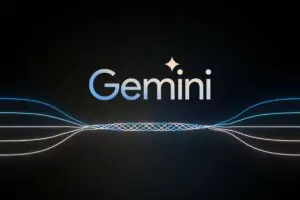OpenAI has finally delivered on its long-awaited promise to give ChatGPT the power of sight, integrating visual capabilities into its advanced voice mode seven months after the feature’s initial announcement. This significant upgrade transforms the AI chatbot into a more comprehensive digital assistant, capable of not only understanding speech but also interpreting the visual world through device cameras.
The enhancement, available exclusively to paid subscribers of ChatGPT Plus ($20 monthly) and Pro ($200 monthly) tiers, represents a powerful evolution in human-AI interaction. Users can now seamlessly incorporate visual elements into their conversations with ChatGPT, pointing their cameras at objects while maintaining natural dialogue flow.
Early testing reveals surprisingly accurate and rapid visual recognition capabilities. The system has demonstrated remarkable precision in identifying various objects, from consumer electronics to household items. In one test, ChatGPT correctly identified a Nintendo Switch OLED box and accompanying accessories, though it mistook a Magic Trackpad for a laptop. The AI showed particular aptitude in recognizing specific product details, such as correctly estimating the size of a Hydro Flask water bottle and identifying the exact model of an Apple Magic Keyboard.
Perhaps most impressive is the speed of these visual interpretations. The system provides near-instantaneous responses, often matching or exceeding human recognition speed. While the AI occasionally exhibits brief hesitation in its responses, seemingly to process more detailed information, its overall performance suggests significant advances in OpenAI’s underlying technology.
The implementation maintains a straightforward user experience. Accessing the camera feature requires a simple tap on a new camera icon within the advanced voice mode interface, allowing users to seamlessly integrate visual elements into ongoing conversations. This design choice emphasizes OpenAI’s focus on creating natural, fluid interactions between users and AI.

However, this technological advancement brings both promising possibilities and concerning implications. On the positive side, the technology could revolutionize accessibility tools for visually impaired individuals. When integrated with smart glasses or similar devices, it could assist with daily tasks like reading menus, navigating streets, or identifying objects in unfamiliar environments.
The system’s potential extends beyond accessibility, promising to transform how people interact with and learn about their environment. The technology could enhance educational experiences, facilitate more intuitive search capabilities, and provide instant information about objects and surroundings in real-time.
Yet, these capabilities also raise significant concerns about AI reliability and safety. Despite its impressive accuracy, the system isn’t infallible. During testing, minor errors occurred, such as misidentifying objects or providing slightly inaccurate counts. While these mistakes might seem trivial in controlled testing environments, they highlight the potential risks of over-reliance on AI for critical tasks.
OpenAI appears mindful of these risks, including explicit warnings against using the feature for safety-related decisions. This cautionary approach acknowledges the ongoing challenge of AI hallucinations – instances where AI systems generate plausible but incorrect information – and their potential consequences in real-world applications.
The visual recognition capability represents a significant milestone in AI development, showcasing how quickly the technology is evolving. The speed and accuracy of its interpretations suggest that OpenAI’s models have achieved a new level of sophistication in processing and understanding visual information.
This development also signals a broader trend in AI evolution, where systems increasingly integrate multiple modes of interaction – text, voice, and now vision – to create more natural and comprehensive human-AI interfaces. As these systems become more sophisticated, they raise important questions about the future of human-AI interaction and the appropriate boundaries for AI assistance in daily life.
As ChatGPT’s visual capabilities continue to roll out to subscribers, the technology industry and users alike will watch closely to see how this feature impacts real-world applications and what new possibilities it might unlock. While the current implementation shows impressive potential, it also serves as a reminder of the need to balance technological advancement with careful consideration of safety and reliability concerns.
















Add Comment